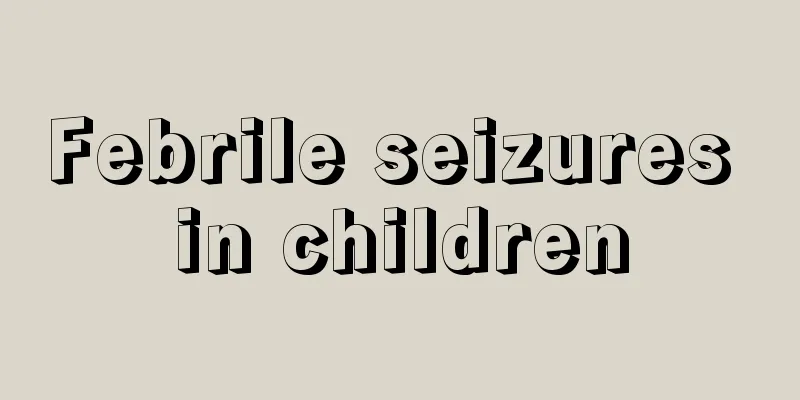Febrile seizures in children

|
Fever can cause many diseases. For example, long-term fever can cause brain lesions and convulsions. Especially for children, convulsions caused by fever are a very common symptom. However, many parents do not know much about convulsions caused by children's fever, and even feel particularly scared when talking about convulsions. So what are the characteristics of febrile convulsions in children at different stages?
The most common cause is hypoxic-ischemic encephalopathy caused by intracranial hemorrhage due to birth trauma or labor asphyxia, followed by neonatal sepsis, purulent meningitis, neonatal respiratory distress syndrome, kernicterus, neonatal tetanus, neonatal tetany, hypomagnesemia, hyponatremia, hypoglycemia and other metabolic abnormalities. Common causes of illness within 1 to 3 days after birth are birth injury, asphyxia, intracranial hemorrhage, hypoglycemia, etc. Common causes of illness within 4 to 10 days after birth are hypocalcemia, kernicterus, hypomagnesemia, early sepsis and purulent meningitis, tetanus, and cranial malformations. At this age, congenital brain malformations and metabolic disorders should also be considered. If the mother has placenta previa, threatened abortion, excessive use of oxytocin, malposition of the fetus, umbilical cord prolapse, etc., it can cause hypoxic brain damage and lead to convulsions. Congenital rubella syndrome, toxoplasmosis, and cytomegalic inclusion disease should also be considered. In some individual cases, anesthetics given before delivery are transmitted to the fetus through the placenta, and the drug is discontinued after birth, which may cause convulsions. In a few cases the cause is unknown.
The most common causes are febrile convulsions, acute infections such as toxic bacillary dysentery, toxic encephalopathy caused by sepsis, purulent meningitis, and viral encephalitis. Congenital brain malformations and congenital metabolic disorders are often particularly prominent at this age, such as phenylketonuria and vitamin B6 dependence; some epilepsy syndromes such as infantile spasms and Ohtahara syndrome also occur during this period, generally accompanied by intellectual disability; in addition, there is also vitamin D deficiency tetany.
With the continuous improvement of the blood-brain barrier and systemic immune function, the incidence of various intracranial infectious diseases has dropped significantly compared to infancy. Infectious toxic encephalopathy, epilepsy and craniocerebral trauma caused by systemic infectious diseases (such as bacillary dysentery, lobar pneumonia, etc.) are relatively common in this stage. Less common ones include intracranial tumors, brain abscesses, intracranial hematomas, cerebral vascular embolism, hypertensive encephalopathy or uremia caused by kidney disease, hypoglycemia, diabetic ketonemia, food or drug poisoning, etc. |
<<: What does convulsion mean?
>>: Causes of febrile seizures in children
Recommend
Baby's eye skin turns pale
The skin at the corners of our eyes generally loo...
What to do if your child's feet peel
Foot peeling is generally seasonal, occurring in ...
How to get your baby to sleep early
Babies are different from adults. Their daily rou...
Is 357 a low-grade fever for children?
The thing that parents worry about most is when t...
It turns out that these are the real reasons for the formation of blue buttocks in babies
Many parents will find that there is always a blu...
What causes children to shiver and feel cold?
Children are the apple of their parents’ eyes. Wh...
What to do if your child always has itchy scalp
Because the human scalp is always covered with a ...
Baby's
After one month, babies begin to explore the worl...
Blood in stool in children
The health of children concerns parents. Since ch...
What is the normal blood sugar level for newborn babies?
Blood sugar mainly refers to the sugar content in...
Commonly used parts of moxibustion for children
Traditional Chinese medicine emphasizes moxibusti...
What are the symptoms of tonsillitis in children?
As parents, we should understand that children ar...
Children's cough medicine
Children have relatively weak resistance, so it i...
Why do children have trouble sleeping?
Poor sleep at night refers to the inability to fa...
What to do if your baby has a fever and nosebleeds
Colds and fevers are very common diseases, especi...









